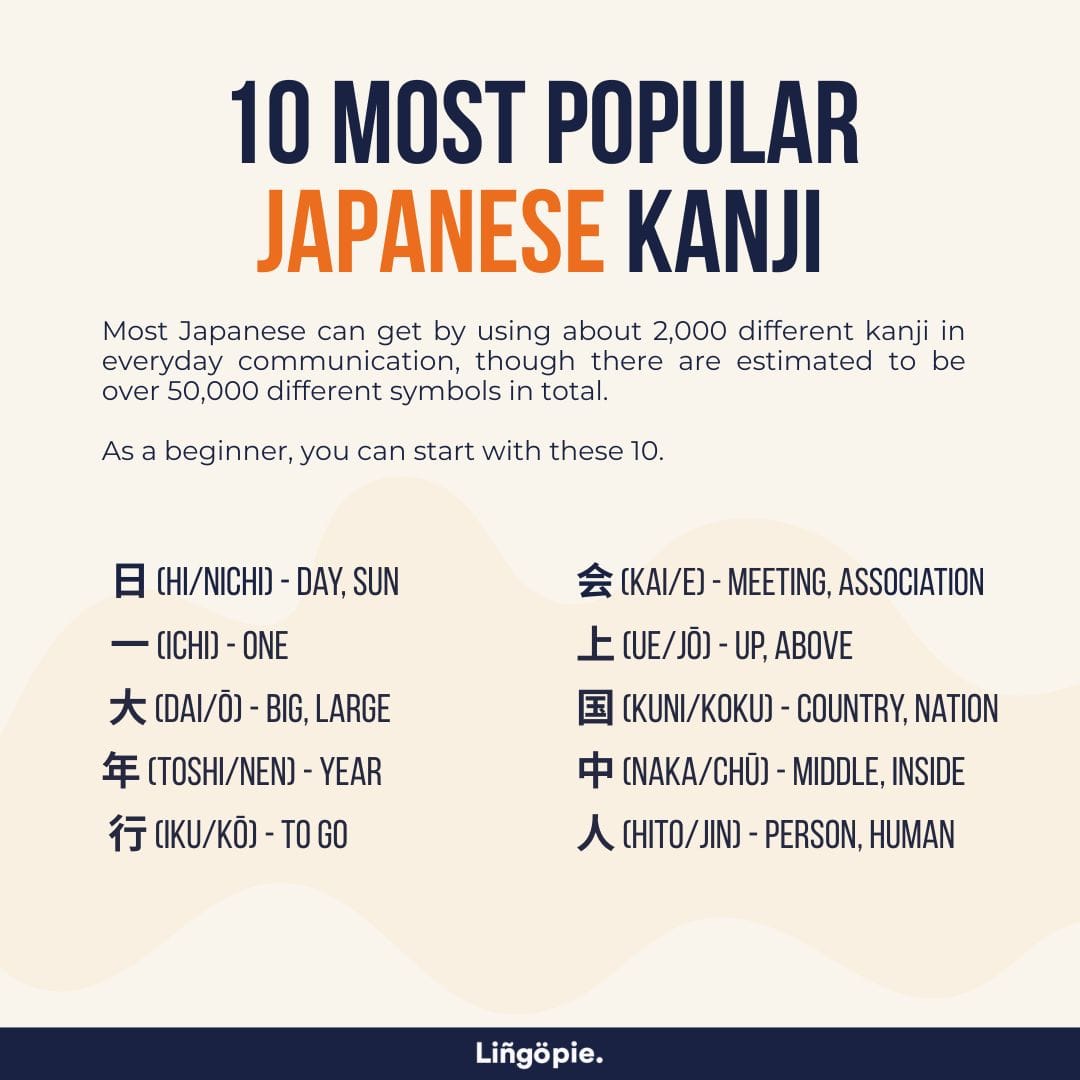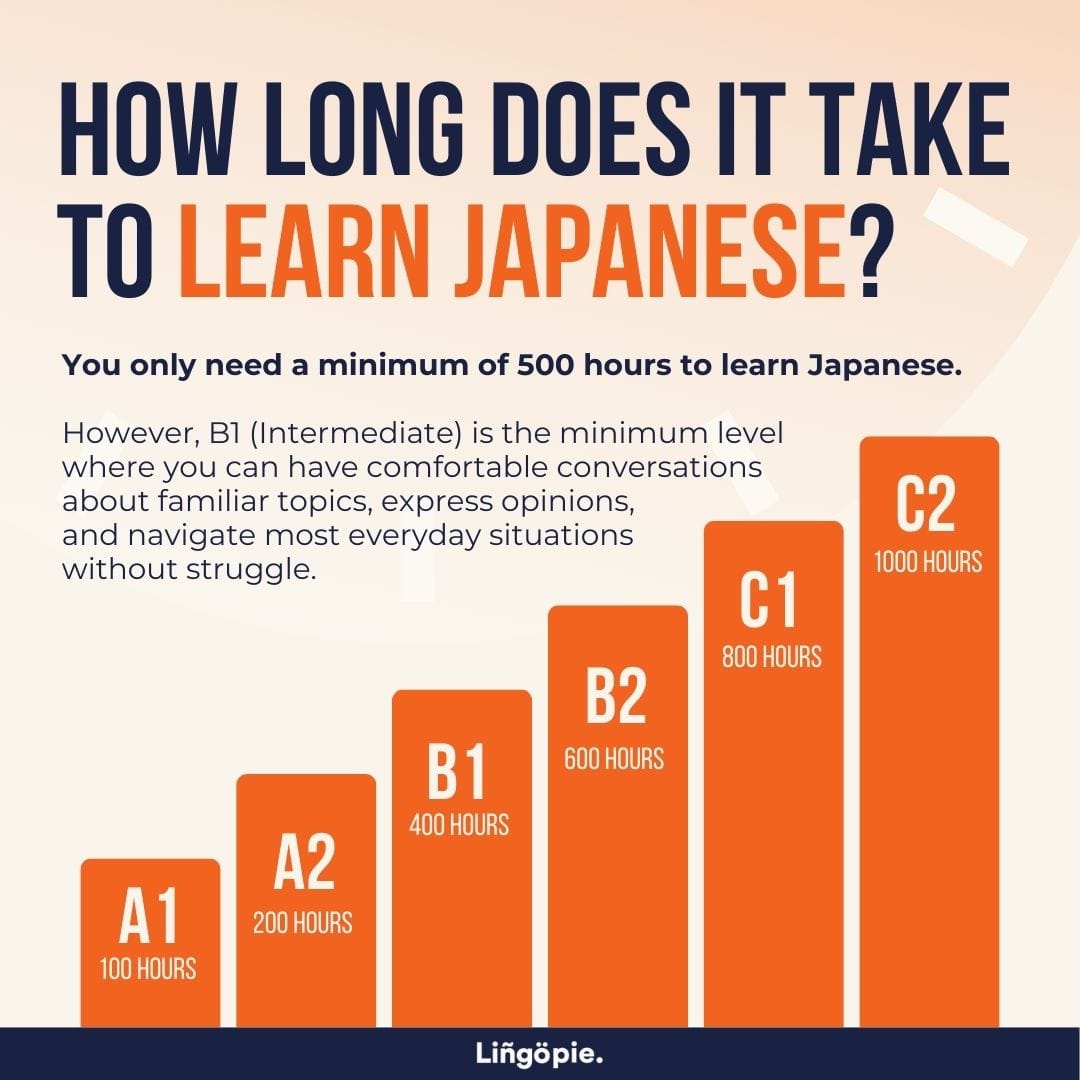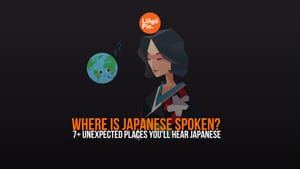So you want to learn Japanese? Great choice! But now you're facing that mountain of learning resources, conflicting advice, and the big question: “What’s the actually effective way to learn Japanese?"
I've spent years researching Japanese learning methods and tracking the experiences of thousands of successful learners. The good news? There are clear patterns among those who've mastered Japanese efficiently. I'm going to break this down into a practical, no-nonsense guide that gives you both the big picture strategy and the tactical details.
- A Beginner’s Guide To Watashi, Boku, Ore, And More
- Japanglish: 26+ Japanese English Words You Can Easily Learn
- No In Japanese: 5 Easy To Politely Refuse In Japanese

The Truth About Japanese Learning (That Most Guides Won’t Tell You)
Let's start with some honesty. Learning Japanese:
- Takes consistent effort over years, not weeks or months
- Requires different approaches for different stages of learning
- Needs a personalized system that works for YOUR brain and lifestyle
- Is more about habits and systems than finding the "perfect" resource
What most beginners waste time doing is bouncing between resources, hoping to find that magical app or textbook that makes Japanese effortless. That resource doesn't exist. Instead, what matters is your approach and framework.

The Best Approach To Learn Japanese
Japanese learning works best when approached strategically rather than haphazardly. Based on the experiences of thousands of successful learners, Japanese acquisition can be broken down into four overlapping phases:
Phase 1: Building Your Foundation (1-3 months)
The first few months are all about establishing a solid foundation that makes everything else easier.
Master the Phonetic Systems First
Japanese has two phonetic alphabets (hiragana and katakana) with 46 basic characters, plus variations. These are essential before tackling kanji.
Effective approach:
- Use spaced repetition systems (SRS) like Anki with visual mnemonics
- Practice writing characters while saying their sounds aloud
- Learn the patterns behind character combinations
- Test both recognition (reading) and recall (writing)
Learn Core Grammar Patterns
Rather than memorizing abstract rules, focus on understanding basic sentence structures through examples.
Effective approach:
- Learn grammar through complete sentence patterns rather than isolated rules
- Focus on the most frequent structures first
- Create your own example sentences to solidify understanding
- Use SRS to review grammar patterns in context

Phase 2: Conquering Kanji (3-9 months)
The Chinese characters used in Japanese (Kanji system) are often the biggest hurdle for learners. The good news is that there are proven systems for making them manageable.
The Recognition-First Approach
This method, popularized by systems like Remembering the Kanji (RTK) and Kodansha Kanji Learner's Course (KKLC), focuses on learning to recognize kanji through their component parts before studying readings.
| System | Pros | Cons |
|---|---|---|
| RTK (Heisig) | Fast acquisition (possible in 3 months), strong component-based approach, teaches writing | No readings or vocabulary, arbitrary keyword choices, dated component analysis |
| KKLC | Better component analysis than RTK, includes vocabulary examples, more practical keywords | Takes longer than RTK, still separates kanji from natural language context |
| WaniKani | Complete system with readings and vocabulary, structured progression, built-in SRS | Monthly subscription cost, fixed progression pace, less emphasis on writing |
The Vocabulary-First Approach
Rather than learning kanji in isolation, this approach teaches them through vocabulary words in context.
Effective approach:
- Learn kanji as they appear in useful vocabulary
- Focus on high-frequency words first
- Use SRS to review both kanji and vocabulary simultaneously
- Learn readings in context rather than in isolation
Most successful learners actually combine elements of both approaches. Many start with a recognition system to build a foundation of the most common kanji, then shift to learning vocabulary words that contain those kanji.
Phase 3: Immersion
Immersion is where theory meets practice. Exposing yourself to massive amounts of Japanese content dramatically accelerates acquisition, and every successful Japanese learner incorporates significant immersion time.
Learn Japanese by Watching TV
One of the most effective and enjoyable ways to immerse yourself in Japanese is through Lingopie. This platform uses TV shows and movies to create a natural learning environment that makes language acquisition feel more like entertainment than study.
Why Lingopie works for Japanese learners:
- Authentic native content with dual subtitles (Japanese and English)
- Interactive features that let you click any word to get an instant translation
- Built-in review system with flashcards created from words you've clicked
- Ability to slow down playback speed to better understand pronunciation
- Tools to practice speaking by repeating sentences from the shows
Lingopie is particularly valuable for Japanese learners who have mastered hiragana and katakana and are looking to build vocabulary, improve listening comprehension, and experience Japanese as native speakers actually use it.
Phase 4: Developing Output Skills
After building a strong foundation through input, it's time to develop your speaking and writing skills.
Effective approach:
- Begin with writing before speaking (allows more time for composition)
- Use language exchange for authentic communication practice
- Focus on expressing meaning rather than grammatical perfection
- Practice shadowing to develop pronunciation and prosody
Building Your Personalized Learning System
The most successful Japanese learners don't follow a single method. Instead, they build personalized systems based on three key principles:
1. Sustainability
A sustainable system is one that can be maintained consistently for years. The data is clear: consistent, spaced practice dramatically outperforms intense cramming followed by long breaks.
- Short, daily sessions (15-30 minutes minimum)
- Weekly longer immersion sessions (1-3 hours)
- Materials that genuinely interest you
- Clear metrics to track progress
- Balance between challenging and enjoyable content
2. Comprehensible Input
The most efficient acquisition happens when you understand most—but not all—of your input material.
- Target material where you understand roughly 80% of the content
- Use tools like Yomichan for quick lookups without breaking flow
- Re-read or re-watch content to gain deeper understanding
- Use content that builds on itself (series, related topics)
3. Strategic Skill Development
Rather than trying to advance all language skills simultaneously, focus on receptive skills (listening, reading) before emphasizing productive skills (speaking, writing).
- Reading and listening should comprise 80% of early learning time
- Speaking and writing become more important after reaching intermediate level
- Focus on practical communication rather than perfect grammar
- Build specialized vocabulary in areas of personal interest

Setting Realistic Expectations
Understanding realistic timelines helps maintain motivation through the inevitable challenges. Based on extensive data, here's what most successful learners achieve with consistent practice:
| Proficiency Level | Description | Approximate Hours Needed |
|---|---|---|
| Survival Japanese | Basic travel needs | 80-100 hours |
| Basic Conversational | JLPT N4 level | 300-400 hours |
| Intermediate | JLPT N3 level | 650-800 hours |
| Business Proficiency | JLPT N2 level | 1,200-1,500 hours |
| Near-Native Fluency | JLPT N1 level | 2,500-3,000+ hours |
These hours represent focused study and active immersion combined. The key insight is that consistency dramatically outperforms intensity – 30 minutes daily produces better results than 5 hours once a week.
Why Progress Feels Uneven
Progress in language learning is never linear. Most learners experience predictable plateaus where progress seems to stall:
- The beginner plateau (3-6 months in): Basic grammar no longer feels challenging but authentic content remains difficult
- The intermediate plateau (1-2 years in): You understand much input but struggle to produce naturally
- The advanced plateau (2-3 years in): You can communicate effectively but still feel a gap with native-like expression
These plateaus aren't signs of failure – they're normal parts of the acquisition process. The proven strategy for overcoming them is to vary your input while maintaining consistency in your core practice.
Your Next Step: Starting Your Japanese Journey
After analyzing the patterns of thousands of successful Japanese learners, one critical insight emerges: there is no single "best way" to learn Japanese. The optimal approach combines:
- Evidence-based learning principles
- Your unique learning style
- Content aligned with your specific interests
- A sustainable system designed for your lifestyle
The learners who achieve fluency aren't those who discover some secret method – they're those who build consistent habits around meaningful content.
Choose one small, specific practice you can start immediately and maintain daily. The journey to Japanese fluency begins with a single, consistent step taken repeatedly.

Ready To Learn Japanese?
So you see, there is no single "best way" to learn Japanese. The most effective approach is the one you’ll stick with consistently. The same can be said for your resources, as one methodology may work for others and not for you.
Our advice? If you want to jumpstart your process and start with immersion, try Lingopie! Lingopie is a language learning tool that allows you to master Japanese through hit TV shows and movies. Give it a try for FREE when you click below!
Japanese Learning FAQ
Should I learn hiragana, katakana, or kanji first?
Start with hiragana, as it's the foundation of Japanese reading and writing. Most textbooks and beginner resources assume hiragana knowledge, and learning it first (which can be done in a few days with focused study) will make everything else easier. Then progress to katakana for foreign words, and begin learning kanji alongside your vocabulary acquisition rather than postponing it, as early kanji familiarity makes grammar study much more efficient.
What are the best apps and websites for learning Japanese?
The most effective approach combines several resources: one-on-one tutoring platforms like Lingopie or iTalki for conversation practice, comprehensive grammar guides like Tae Kim's Guide to Japanese, spaced repetition flashcard systems like Anki, and immersion tools like Lingopie for learning from authentic content.
How do I approach Japanese grammar as a beginner?
Japanese grammar differs significantly from English, so find a structured guide that starts with fundamentals (particles, basic sentence structure) before moving to more complex concepts. Tae Kim's Guide to Japanese and Lingopie are popular choices because they explain the logic behind grammar patterns rather than just having you memorize rules. Focus on mastering basic sentence structures first, then gradually add complexity as you practice with example sentences.
How can I learn Japanese through anime and other media?
Immersion learning is highly effective, but requires the right approach. Start with content suitable for your level (children's shows for beginners), use tools like Lingopie that provide interactive subtitles, create flashcards from words you encounter, and actively review these regularly. The key is active engagement – don't just passively watch, but pause, repeat phrases, and study the vocabulary and grammar that appear frequently.
How long does it take to become fluent in Japanese?
Becoming conversationally comfortable in Japanese typically requires 400-600 hours of dedicated study for most learners. This translates to roughly 1-2 years of consistent daily practice (30-60 minutes per day). However, reaching true fluency takes considerably longer – usually 3-5 years minimum – and depends greatly on your study methods, consistency, exposure to native content, and opportunities for real conversation practice.
.
Create a balanced daily routine of 20-30 minutes that includes: 5 minutes reviewing flashcards of previously learned vocabulary and kanji, 10 minutes on new grammar concepts or vocabulary, 10 minutes of listening/reading practice with authentic content, and 5 minutes of speaking practice (even if reading aloud). Consistency trumps marathon sessions – studying daily, even briefly, is far more effective than cramming once weekly, and using varied resources prevents boredom.





![What’s The Best Way To Learn Spanish? [5 Best Tips]](/blog/content/images/2025/04/Best-way-to-learn-Spanish.jpg)



![How To Use Mo (も) Particle In Japanese Grammar [Guide]](/blog/content/images/size/w300/2025/06/How-To-Use-Mo-----Particle-In-Japanese-Grammar.jpg)
